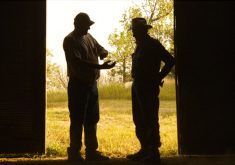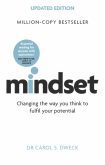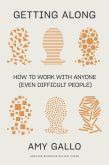Books Reviewed
Bounce: Mozart, Federer, Picasso, Beckham, and the Science of Success (HarperCollins, 2010) By Matthew Syed
Chasing Stars: The Myth of Talent and the Portability of Performance (Princeton University Press, 2010) By Boris Groysberg
Scaling Up Excellence: Getting to More Without Settling for Less (Random House, 2014) By Robert I. Sutton and Huggy Rao
When the big firms go headhunting, and when they poach the best and brightest players from their competitors, they rarely get what they pay for.
Read Also

The Secret Sauce of Sibling Run Farms
Working with family can be difficult, but successful sibling agricultural operations seem to leverage the unique advantages of their relationships to create growth for their farms.
The star hires are no longer stars. They’re mediocre at best, and there can be a powerful lesson for farmers in why they underperform.
What does it take to move a business or a farm from average to great? Or to grow a concept into an enterprise? These are the questions raised in three contexts by new and newish books by a former ping-pong champ, a couple of Stanford University professors and a heavy-hitting professor of management at Harvard.
Each shows that growth is best when it comes from within, not hired from outside. And although each book casts a different light on the subject, they add up to a stern message for farmers as farm size continues to grow.
Importantly, the advice — including how to anticipate the hurdles that will get in your way, and how to jump them — are as relevant to farming as they are to the next big thing in Silicon Valley. The common point is that success is contextual more than portable.
Their bottom line is that outside experts may have valuable insights and services, but success is rooted to where you are and where you have been.
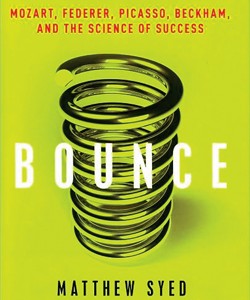 Table tennis champ Matthew Syed, an Oxford grad and a columnist for the Times of London, demonstrates in Bounce: Mozart, Federer, Picasso, Beckham, and the Science of Success, that excellence or, in his terms, winning in sport, is a product of striving. It isn’t the result of isolated genius. It comes from the development of skills, practice and relentless focus on the goal.
Table tennis champ Matthew Syed, an Oxford grad and a columnist for the Times of London, demonstrates in Bounce: Mozart, Federer, Picasso, Beckham, and the Science of Success, that excellence or, in his terms, winning in sport, is a product of striving. It isn’t the result of isolated genius. It comes from the development of skills, practice and relentless focus on the goal.
Mozart, usually thought of as a unique genius, had 3,500 hours of piano practice by the time he was six. His father, Leopold, was one of the great music teachers of his day. The old wisecrack about how to get to Carnegie Hall — “practice, practice, practice” — is the paradigm.
“The best way to predict the future is to create it,” Syed writes. This is glib, but it is the essence of industrial processes and farming. Reducing the influence of luck and increasing the influence of preparation means the difference between average work and superior work, horses that run with the pack and those that are winners. For Syed, that means focusing on the skills that produce the win. The implicit question of course is: which skills?
Chasing Stars; The Myth of Talent and the Portability of Performance by Harvard business school professor Boris Groysberg focuses on the question of which skills can be taken to new jobs from old. With 103 pages of appendices, notes and index to support 339 pages of text, it burrows into the question of whether excellence at work is portable or contextual. His guinea pigs are star analysts at Wall Street investment banks in the period 1988 to 1996. These are the folks who pore over financial documents and visit factories in order to predict the sales, profits and share prices of companies they study. Groysberg’s analysis demonstrates that excellence is rooted in one workplace — one farm, if you like — and its tools and co-workers, managerial goals and company support.
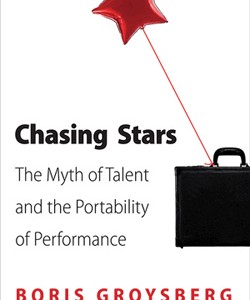 In a study of analysts of steel makers, airlines, etc. Groysberg found that the probability of an analyst continuing a winning streak of making right guesses about profits and, critically, getting more numbers right than other analysts at other investment banks was far greater for those who stayed than for those who allowed themselves to be poached by other investments banks.
In a study of analysts of steel makers, airlines, etc. Groysberg found that the probability of an analyst continuing a winning streak of making right guesses about profits and, critically, getting more numbers right than other analysts at other investment banks was far greater for those who stayed than for those who allowed themselves to be poached by other investments banks.
Top analysts had a positive correlation of prior-year performance with successive-year performance if they stayed put. They had a negative correlation of successive-year performance with prior-year performance if they moved to another shop.
“Brilliance was not something that an analyst could pack in a briefcase,” Groysberg writes. “Top of group records appear to have been embedded in where the analyst worked. Support groups, the influence of management, managerial style, data resources, ability to travel, the kinds of clients with whom analysts interacted were highly influential on performance.”
Those firms which paid through the nose for star analysts did not get what they bargained for. Most of the time, the poached analysts lost their touch.
In other words, creating a great environment for doing business on the farm makes a real difference, both for you and your employees.
Interestingly, Groysberg’s performance drops were worse for men than for women, who are much better at taking their track records with them. Groysberg found women tended to cultivate external relationships with clients, other colleagues and sources of information more than men, and they thought more about the repercussions of moving.
There is also the effect of the so-called “winner’s curse,” the problem that someone who does very well in one year or time period will be unable to do it again next time. The problem is exaggerated when the winner’s price or product rises, e.g., a farmer pays too much for land with an excellent production record, and then finds that in subsequent time periods, the land is not so productive or at least not productive enough to recover the premium price.
Finally, there is the underdog effect. Not only is there some random amount of rotation of winners from fourth to first quartile or even from 10th to first decile, there is also the strong wish of recent followers to be leaders. Groysberg identifies this in the context of female analysts who, he speculates, “feel a need to be more than average, not just to be one of the group but at the top of the group.”
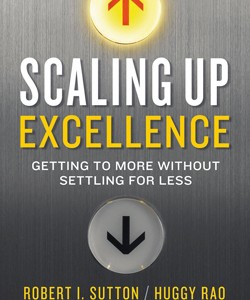 The last book of our three is both the flimsiest and, yet, paradoxically, the most provocative. Authors Robert I. Sutton and Huggy Rao, both management gurus at Stanford University, propose that if firms are careful to cultivate their talent, they can grow from within. That’s the theme and message of Scaling up Excellence: Getting to More Without Settling for Less.
The last book of our three is both the flimsiest and, yet, paradoxically, the most provocative. Authors Robert I. Sutton and Huggy Rao, both management gurus at Stanford University, propose that if firms are careful to cultivate their talent, they can grow from within. That’s the theme and message of Scaling up Excellence: Getting to More Without Settling for Less.
Sutton and Rao set up two polar cases of how companies sell themselves. They call those that are immobile “Catholic,” i.e. one size fits all. Then, those that are adaptive get called “Buddhist.”
Catholicism is outward looking, Buddhism looks inward. Catholicism is supposedly immobile and unadaptive, while Buddhism is flexible and ready to embrace new ideas.
We all agree there’s some stereotyping going on here, but you get the point.
The ideas Sutton and Rao bring up are provocative. They recall the 1964 murder of Kitty Genovese in New York when 38 witnesses heard her scream and did nothing. They call this the bystander effect, when many people take cues from others who may not react.
In a business context, this relates to your employees, or your family members, seeing something that seems to be going off the rails, and then doing nothing about it. We’ve all seen it happen. Probably we’ve seen it happen too many times.
To get past this passivity, a leader must not let subordinates fear taking responsibility, or fear being ostracized for recommending changes. Most of all, they can’t be afraid that they won’t get any credit for their good work or good ideas.
Without such a positive environment, growing from within is all the harder.
Authors of business books read each other, and not surprisingly, Scaling Up Excellence is a summation of some of what has gone before. Putting aside cute phrases, the book has a great deal to offer. It portrays successful firms as idea mills in which astute managers can reach down to workers at the barricades and perhaps up to senior management to make the enterprise work for customers, employees and, of course, for the owners.
It can work for farms and ranches as well as national businesses. And the scaling-up model is unavoidable in large enterprises. After all, everyone starts small. The book is a compilation of anecdotes in search of rules. One may object that a case study of a high-tech company may not work for a shoe manufacturer. Yet the mass of insights is persuasive. Scaling Up Excellence is a valuable, provocative read.
Each of these books raises the issue of motivation. All three also assert that individual excellence comes from within and is a product of group co-operation. They agree too that it is group excellence that supports individual achievement.
This is much the same argument that Tom Peters made in his In Search of Excellence, the 1982 book which spawned a thousand — that’s not an exaggeration — followers and imitators. These three books follow in his footsteps, but they are valid, unique in their ways, and solid in their insights. Read them and think.
Andrew Allentuck is a columnist for Grainews and author of several books on economics.





